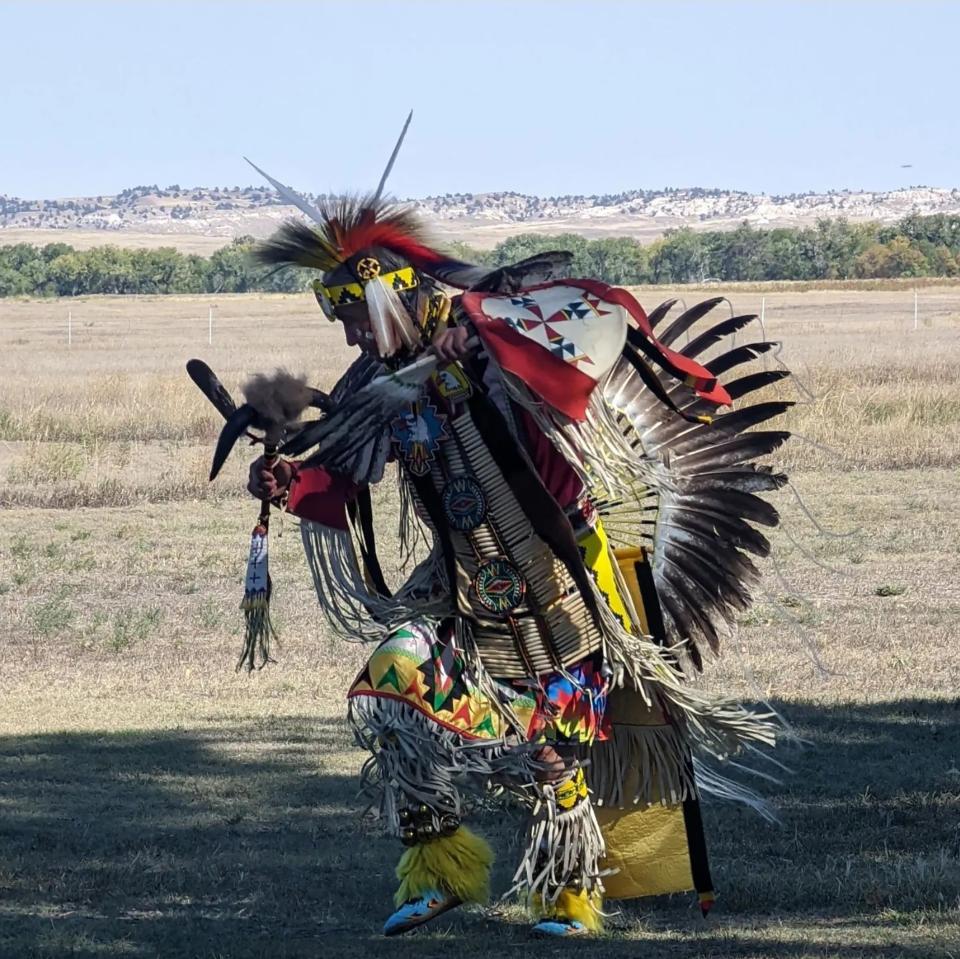Native American Education Conference
By Aley Philp, Wyoming Historical Society Executive Director
Again in 2024, Wyoming’s annual Native American Education Conference highlighted the resilience of Indigenous people and the empowerment of the young. The conference has been sponsored every August since 2010 by the Wyoming Department of Education. I was able to attend this year and learn more about exciting programs that shine a light on the history of Native people in Wyoming and give us a deeper understanding of Wyoming’s history.
High points included Jason Baldes’s keynote on the Eastern Shoshone and Northern Arapaho Tribes’ buffalo restoration efforts on the Wind River Reservation and a showing of “Chiefs,” the well-known documentary about Albert Redman, Sr., and the Wyoming Indian High School championship basketball teams that he coached.
But there were dozens of presentations.
Michelle Hofman and Veronica Miller stressed the importance of accurate Native history in their session, “Empowering Resilience through Educational Materials.”
The history of Native people, they noted, has often been misrepresented in history books, leading to negative stereotypes and misconceptions about Native Americans. They emphasized the teaching of culturally relevant and historically accurate information.
Libraries, museums and online databases, along with collaboration with Native communities, can provide authentic and respectful information for students, they said. Educators should not only present these materials but also encourage critical engagement from students to foster a deeper understanding of history. This approach helps students move beyond stereotypes and see Native people as individuals with diverse experiences and contributions.
Dr. Phineas Kelly of the University of Wyoming’s anthropology department has worked for years with Arapaho elders using new technologies to help preserve the Arapaho language. Last week, he presented on “The Arapaho Four Hills of Life,” a fully-integrated virtual reality app that offers new ways to preserve and encourage the study of the Northern Arapaho language and culture, and brings the language and culture to life for K-12 students.
The application focuses on four culturally significant locations associated with important Arapaho stories—three in Wyoming and one in Colorado. The app uses aerial drone video and 360-degree panoramas to immerse students in the Northern Arapaho culture. It presents the Northern Arapaho language and culture within a familiar VR platform. Developed in close collaboration with Northern Arapaho elders, the content is accurate and respectful of cultural traditions.
As we move forward, it is important to continue seeking out and integrating authentic resources into our educational systems. By doing so, we can ensure that all students, young and old, receive a well-rounded and truthful education that honors and respects the diverse histories and cultures of Native people.

